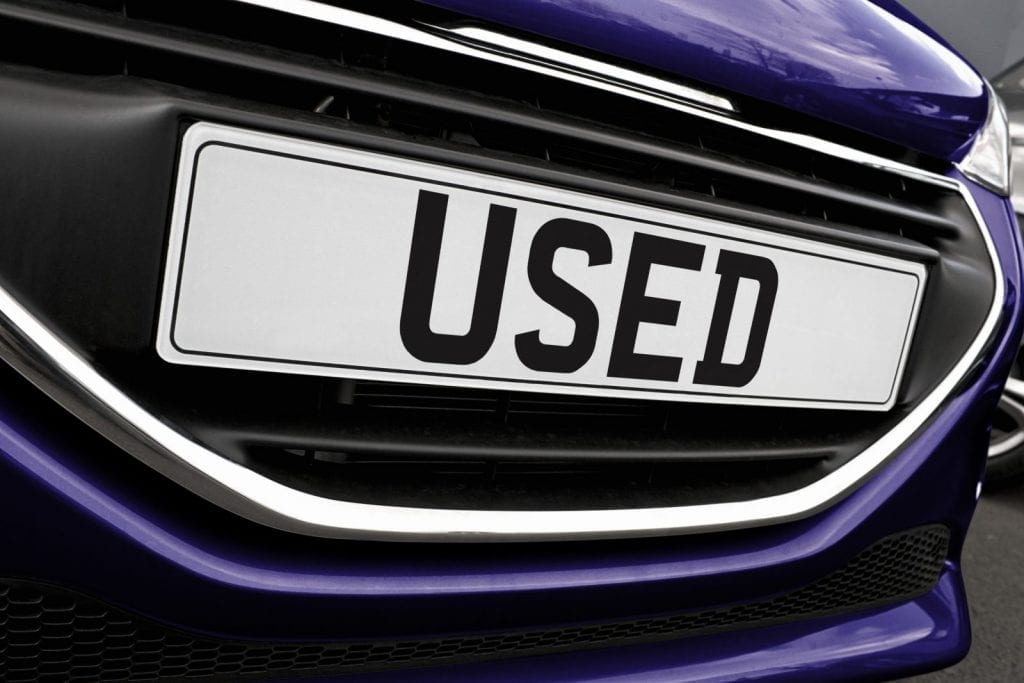Buying a second-hand car, whether you’re buying privately or from a dealership, does have many advantages over buying a brand-new car. The biggest advantage of buying used is avoiding depreciation, as new cars can lose up to 60% of their value within the first three years of ownership. Whether you’re buying your first car or you’re a seasoned car-buying veteran, our top tips are here to help you!

Where to buy a used car?
There are two ways in which you can purchase a second-hand car; buying from a private seller or buying from a dealership. if you’re buying privately you will have the chance to meet the previous owner and ask as many questions as you like about the car’s history. You will also have the opportunity to haggle at a lower price with the seller, especially if you find a fault with the car.
If you would prefer to buy through a used car dealership, you will have some legal protection when purchasing the car under the Consumer Rights Act. With a dealership, you will be able to arrange used car finance which can give you some flexibility with money if you want to purchase something a little bit more expensive.
When to buy a used car?
There can be many signs it’s time to buy a new car so if you find yourself in this position, the time of year you buy your car can be important. The time of year can affect used car prices and choosing the right time to buy can help to save you money! It can be as simple as buying near the end of the month as dealers will have monthly targets to hit and getting the sale from you could result in them hitting their sales target for the month. Similarly, choosing to buy just before the new registration comes out in March and September each year can help you to get a good deal on a used car when new car buyers part exchange their old cars.
Find out more about when is the best time to buy a used car.
Finance a used car!
Top used car buying questions to ask!
Documentation:
- Is the logbook/V5C document there? You will need it to tax the car.
- Is the seller’s name registered on the V5C? If not, why are they selling it on behalf of someone else? Check that the vehicle registration document has a watermark – a watermark will show that the documents are genuine.
- Are there any spelling mistakes on the V5C?
- Does the vehicle identification number, the engine number, the colour and the number plate match the V5C? There shouldn’t be any differences.

Mileage:
- Is the mileage, age of the car and overall appearance of the car consistent?
Check the recorded mileage on service records, the MOT certificate and other documents to see if it matches the mileage in the car.
Safety:
- Are the tyres in good condition? Check the tyre tread on them – the minimum requirement for a tyre tread is 1.6mm. You can do the 20p coin test to check the tyre tread. If it is close to this or below 1.6mm you will need to change the tyres.
- Does it come with a jack and other tools necessary to change the wheel?
- Do the seatbelts work properly? Are they frayed or cut in any places?
- Do the lights, windscreen wipers and washer work properly? Switch on the lights and walk around the car, checking the indicators, headlights and brake lights work.
Engine:
- Is there any abnormal noise coming from the engine?
- Does the oil light go out when the engine starts?
- Are there any visible signs of excessive exhaust fumes? Is the catalytic converter in good condition? Look for a recent emissions test either alone or as part of an MOT test.
- Is there any sludge on the underside of the filler cap? If there is it could indicate poor servicing.
- Is the oil level correct? If it’s too low it could indicate that the owner neglected routine checks.
- Has the cam belt been replaced according to the service schedule?
- Is there any sign of a leak? An oil leak will be brown in colour or black if the engine is cold. The coolant will be green/pink/yellow-white. The gearbox or power steering will be a red-brown colour, with the gearbox fluid being slightly thicker in consistency.
Locks, windows and controls.
- Do all the locks including central locking work?
- Can you close and open the windows and sunroof properly?
- Are locking wheel nuts fitted? If so, check that the correct adapter is included in the tool kit
Exterior:
- Is the paintwork consistent or does it look different in some places?
- Is there any rust on the body? Common places to see rust are on the wings, sills, under the bumper and the wheel arch. An early sign of rust is when the paint starts to bubble, which will eventually come off.
- Check for any signs of dents, replacement panels and door seals which can indicate if anything has been fixed or not fixed.

Test driving a used car:
Your test drive is the chance to check that the car is in working order but you must ensure that you are insured to drive the car before a test drive. If you find anything wrong with the car you can use it as a bargaining tool to haggle the price of the car down or walk away from the sale.
When you test drive a car you need to check:
- That all the warning lights work
- Ensure the brakes are effective. Is the braking even or can you feel the car pull to one side?
- Are there any unusual noises or excessive exhaust smoke?
- If the handbrake works properly
- That the steering wheel vibrates or pulls to one side
- If there is any resistance or grinding noise when changing gears
- Does the clutch make a noise when pressing down? Is the biting point high? The biting point on most cars will be in the middle of the pedal travel. If so, this can be an indication that it will need to be replaced soon.
However, if you choose to buy your used car, make sure you check this guide and follow it when you go to see and test drive the car you are interested in buying. It’ll help you avoid some of the most common pitfalls of buying a used car!
Read our top tips on how to test drive a car.
Finance a used car today!
We can help match you with one of our trusted car finance lenders who can offer affordable finance on used cars! Once you’ve found the right deal, you can choose any used car from any FCA-approved car dealer in the UK!

